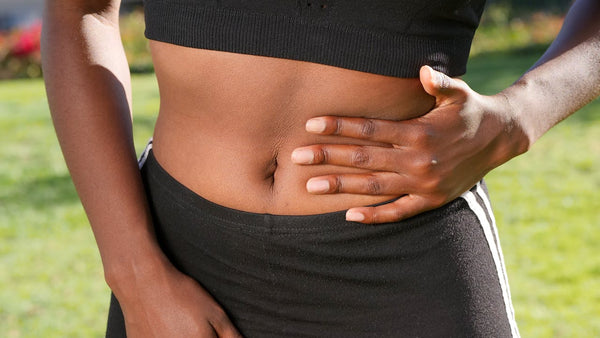The Surprising Truth About Side Stitches And How To Stop Them
Alright, endurance warriors, let's talk about a topic that can bring even the toughest athletes to a grinding halt: side stitches. You know the feeling—a sharp, stabbing pain in your side that hits during a run or ride, forcing you to slow down or even stop. Whether you're a runner, cyclist, or just someone who loves pushing the limits, you’ve probably experienced this frustrating phenomenon. In fact, around 70% of endurance athletes deal with side stitches at least once a year. But fear not—there are ways to kick those stitches to the curb.
Let’s break down what might be causing them and, more importantly, how to prevent them from ruining your training and races.
What Causes Side Stitches?
Here’s the deal—no one knows exactly why side stitches happen, but we’ve got some solid theories. The most popular one? Your diaphragm is cramping up, likely because it’s not getting enough blood flow (a condition known as ischemia). Here’s how it works: when you’re exercising hard, you’re breathing rapidly and putting pressure on your abdominal muscles. Your lungs are pushing down while your abs are pushing up, and guess what’s stuck in the middle? Your diaphragm. That “pinch” might cut off the blood supply, causing it to cramp up just like any other muscle under stress.
This is why beginners or athletes ramping up their pace or distance often fall victim to side stitches. Their diaphragm isn’t used to that kind of workload.
There’s also a second theory, though it's less supported. It suggests that side stitches may be due to irritation of the parietal peritoneum, the membrane lining your abdominal wall. But let’s stick with the diaphragm theory since it makes the most sense based on what we know.
How to Prevent Side Stitches
Now that we’ve got the possible causes covered, let’s focus on what you can do to avoid side stitches, both before and during your workout.
Before Endurance Exercise:
-
Timing Your Meals Right: Eat your last meal 2-3 hours before your workout, and keep it low in fat and fiber. You don’t want your body still digesting food when it's time to hit the pavement because less blood will be available for your diaphragm, increasing the chance of spasms. Quick-digesting carbs like a gel are fine if you need a snack right before a run or ride.
-
Avoid Sugary Drinks: Drinks and juices high in sugar—especially fruit juice—are notorious for triggering side stitches. Water and sports drinks are safer bets.
-
Warm Up: Spend the first 10-15 minutes of your workout easing into it. Warm up those muscles and let your body settle into a solid breathing pattern. You’re good to go once you break a sweat.
During Exercise:
-
Slow and Steady: After warming up, don’t jump into full throttle. Gradually increase your pace—maybe 10 seconds faster per mile for a threshold workout, for example. You want your body to adjust smoothly to the effort.
-
Breathe Deep: Shallow breaths don’t cut it. Take full, deep breaths to ensure your diaphragm and other muscles get enough oxygen. Research shows that faster, deeper breaths (e.g., inhale for two steps, exhale for one step) can help.
-
Exhale with a Strategy: If you feel a stitch coming on, slow down and try this trick: exhale as the foot on the opposite side of the stitch strikes the ground. This syncs the impact with your diaphragm muscles and helps release the tension that’s causing the cramp.
-
Press it Out: If you get a stitch, press down on the painful area with your hand while exhaling. This can relieve the pressure.
-
Stretch it Out: Still dealing with that stitch? Stretch it out. Take a deep breath, raise your arms over your head, and bend at the waist toward the opposite side of the stitch. This can help relax the muscles and ease the pain.
After Endurance Exercise:
-
Strengthen Your Core: Spend about 10 minutes, twice a week, working on your abs and obliques. Research shows that a strong core can help prevent side stitches by stabilizing your trunk and reducing unnecessary movement.
-
Fix Your Posture: Stand tall, sit straight. A slouched posture (kyphosis) has been linked to an increased risk of side stitches. Avoid that hunched-over position when you’re at your desk or on your phone all day.
The Bottom Line on Side Stitches
Side stitches can be a total pain (literally), especially when they hit during training or a race. While we don’t have a definitive cause nailed down, we do know there are several strategies that can help prevent and manage them. If you’ve tried everything and still can’t shake the side stitches, it might be worth checking in with a doc—there could be an underlying issue like poor blood flow to your intestines.
In the meantime, focus on the basics: time your meals right, avoid sugary drinks, warm up properly, and breathe deeply. Combine that with a solid core routine, and you’ll be well on your way to leaving those side stitches in the dust.
References
- Morton, D.; Callister, R., Factors influencing exercise-related transient abdominal pain. Medicine & Science in Sports & Exercise 2002, 34 (5), 745-749.
2. Morton, D.; Callister, R., Spirometry measurements during an episode of exercise-related transient abdominal pain. International Journal of Sports Physiology and Performance 2006, 1 (4), 336-346.
3. Morton, D.; Callister, R., Characteristics and etiology of exercise-related transient abdominal pain. Medicine & Science in Sports & Exercise 2000, 32 (2), 432-438.
4. Morton, D.; Callister, R.; Richards, D., Epidemiology of exercise-related transient abdominal pain at the Sydney city to Surf community run. Journal of Science and Medicine in Sport 2005, 8 (2), 152-162.
5. Morton, D.; Aragón-vargas, L.; Callister, R., Effect of ingested fluid composition on exercise-related transient abdominal pain. International Journal of Sport Nutrition and Exercise Metabolism 2004, 14 (2), 197-208.
6. Morton, D.; Aune, T., Runner's stitch and the thoracic spine. British Journal of Sports Medicine 2004, 38, 240-243.
7. Muir, B., Exercise related transient abdominal pain: a case report and review of the literature. Journal of the Canadian Chiropractic Association 2009, 53 (4), 251-260.
8. Plunkett, B.; Hopkins, W., Investigation of the side pain "stitch" induced by running after fluid ingestion. Medicine & Science in Sports & Exercise 1999, 31 (8), 1169-1175.


